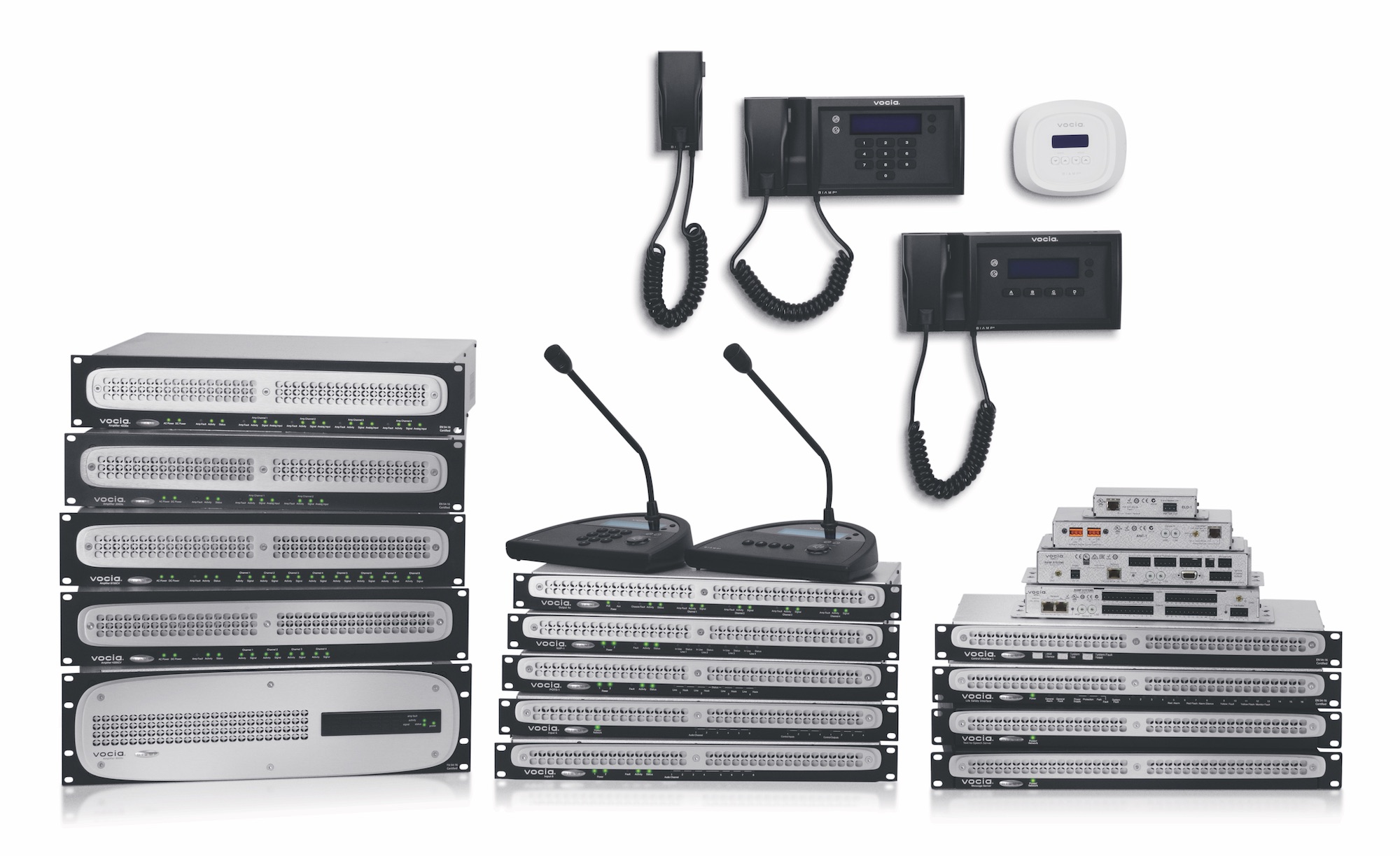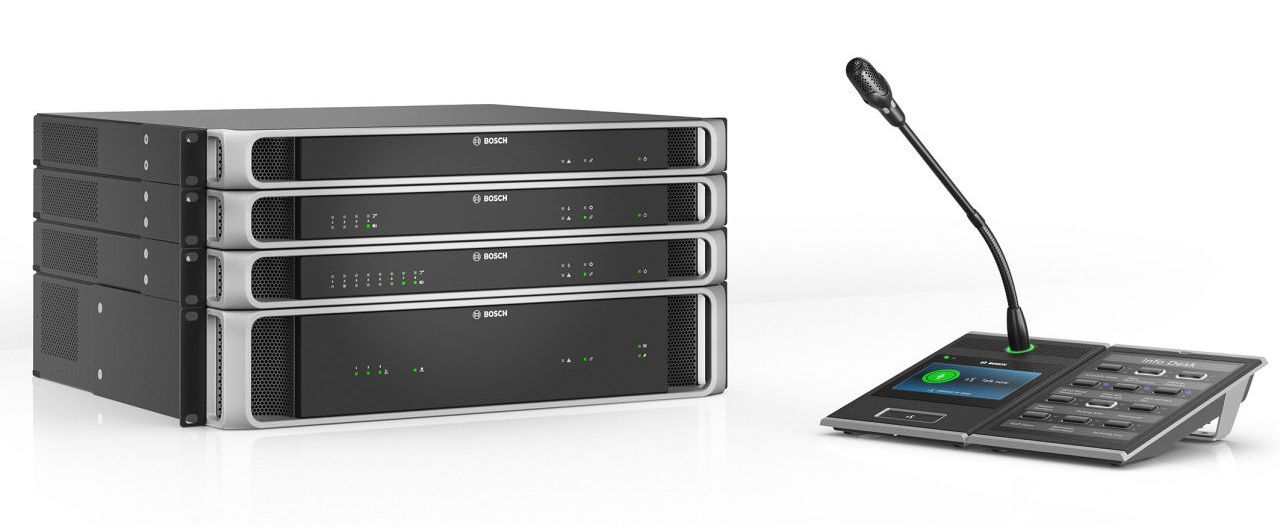In recent years, campus emergencies like mass shootings or toxic substance releases have become an all-too-common headline on the nightly news. These developments have elevated awareness for tech managers and integrators responsible for deploying facility- and campus-wide systems for public safety and paging. Robust public address systems are no longer optional; they can now be a matter of life and death. The crackling, spotty, and garbled sound quality that many of us remember from our own school days will not do when lives are at stake.
In this article, paging and mass notification system experts walk us through the very latest technology for these environments. We evaluate what is important to consider when upgrading a facility’s sound system, and how the latest breed of emergency paging systems improves upon their predecessors.
Critical Considerations
AtlasIED places primary importance on evaluating all the disparate communication systems that are used daily, as well as those that are used only for emergency or critical situations. The best way to secure a facility and keep people safe requires more than just overhead paging, so starting with a comprehensive snapshot of systems and capabilities makes sense.

For example, there may be people in the building with hearing or other impairments, or environments where paging doesn’t reach or is not intelligible. In these cases, AtlasIED recommends designing an additional means of quickly reaching these people. As a result, the most robust mass communication systems will have a combination of audio, visual, and electronic notifications, and will be reliable for both everyday use and for emergencies.
Once that’s done, Mike Cast, Vocia sales manager at Biamp, recommends making sure all regulatory measures are taken to meet the local code, and this could be viewed as the single most important step in this process. Feature sets that differentiate ECS from paging, such as monitoring speaker circuits, failover of amplification circuits, networking circuit failover, DC power capabilities, and system self-sufficient uptime will need to be reviewed with the appropriate authorities to get everyone involved in a potential emergency on the same page.
Businesses live in a world where critical events and emergency scenarios seem to be occurring frequently. To deploy messages quickly when seconds count, AtlasIED’s GLOBALCOM.IP ensures the right people are immediately informed during an emergency. Pre-recorded messages, visual notifications, and custom messages are broadcasted automatically (and in priority) across the facility to calmly lead everyone to safety. GLOBALCOM.IP is also engineered for interoperability by utilizing Voice over IP (VoIP) and Audio over Ethernet (AoE) protocols simultaneously over a single IP-based network infrastructure. AtlasIED’s third protocol, IEDNet+, provides enterprise system control and Wide Area Network (WAN) capability to Audio over Ethernet (AoE) communication across the world, providing next-level communication.
The Next Generation of Paging
As we’ve seen in many other facets of the AV industry, emergency paging and communication systems are becoming more network based. The newest paging systems utilize all of the communication technologies in the building or across a campus with a synergistic or unifying platform, ensuring that clear and consistent instructions are communicated as needed, where they are needed.

When building out the system, experts advise enlisting the participation of local authorities early into the design process. The days of selecting a system in a vacuum have passed. Interpretation of critical codes like Mass Notification Systems UL 2572 and NFPA 72 can greatly affect the system hardware and platform choices, and should be done in consultation with all parties that could be involved in an emergency.
Additionally, it’s always smart to engage a licensed contractor or consultant who specializes in making technology and life safety systems work (and work well together). Be comfortable and honest with the contractor working on the network, as the majority of mass notification systems will rely heavily on that network infrastructure. The consultant should also be familiar with the local AHJ requirements. Remember that deploying a system that is up to code will ensure the minimum capabilities necessary, but may not cover the other features that are specific to or necessary for the majority of unique environments. A consultant will help bridge those gaps.
Biamp’s Vocia is a single platform designed to address all paging and ECS needs. Vocia was designed and developed on a standard that requires all the regulatory features for ECS to be included. When certain features are not needed for one reason or another, that hardware set is just not included in the solution. Having a single hardware platform and software interface for paging or ECS makes the initial install and the growth of that system much easier.
Digital Signage System Integration
Digital signage has evolved in the past decade from being video transmission-based to being IP-based, and as such has become involved in the unified communication ecosystem. Through Common Alert Protocol (CAP), mass communications systems can utilize digital signage for critical messaging, to illustrate instructions or update notification status within a building, across a campus, or on an enterprise global network.
“Visual display and digital signage are becoming predominant and requested in large venue facilities,” said Biamp’s Mike Cast. “Often, each manufacturer has its own server that acts as the gateway to send signals to the display. The initiation of the urgent need is often triggered via industry-standard protocols allowing for dedicated inputs on the devices to have priority and display the urgent message.”

The involvement of digital signage ensures that not only audio cues but also visual ones can be effectively delivered in an emergency scenario. In large gatherings where there could potentially be crowd and emergency traffic noise, having visual reinforcement is crucial and underscores the need for systems to be integrated. Tech managers should carefully consider placement of signage according to traffic patterns and emergency escape routes.
Digital Versatility and Scalability
When transitioning to a system, the key features to look for are IP connectivity, digital versatility, scalability, reliability, and a system that is EVAC certified. According to Bosch, the company’s Praesideo system has 20,000 deployments globally and is an example of a system that meets all of these robust requirements. The system’s optical network offers freedom in system design, interference-free audio, and a high level of redundancy. It also interfaces with other security systems, which means customers don’t have to discard legacy systems that might be working well for them.
Many companies, including Bosch, offer a certified partner program with trained installers to add assurances that all compliance requirements are met. Obtaining specialized training is further assurance that all parties involved are comfortable with how to best utilize the system features in case of an emergency.
Safer Work and School Environments
Systems that are the most reliable will have a high level of built-in redundancy, so that even a physical break in the fiber optic cable won’t affect operation—an essential feature for uninterrupted use during critical situations. Having backup or spare devices on hand also offers an extra level of protection.
By integrating visual as well as audio cues, having pre-recorded messaging, and planning for the unique layout and needs of a facility’s users will allow campuses to always be prepared for an emergency scenario. The spirit of cooperation facilities planning will foster with local authorities will strengthen communities. Working together to plan for potential emergencies builds camaraderie among usually disparate entities.
A robust safety and paging system is a little like car insurance: you hope you never need it, but it sure does give you peace of mind knowing all the right elements are in place.
